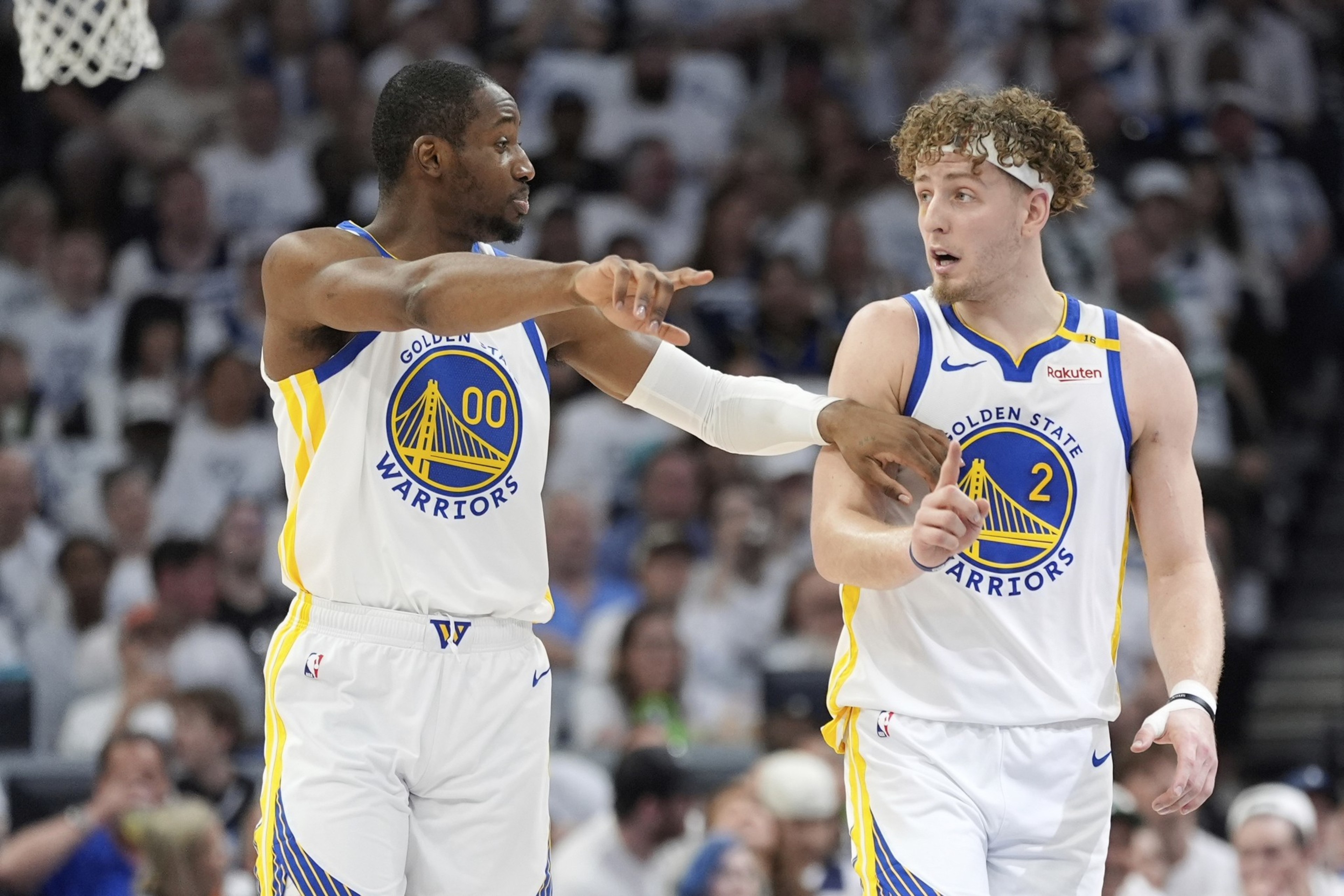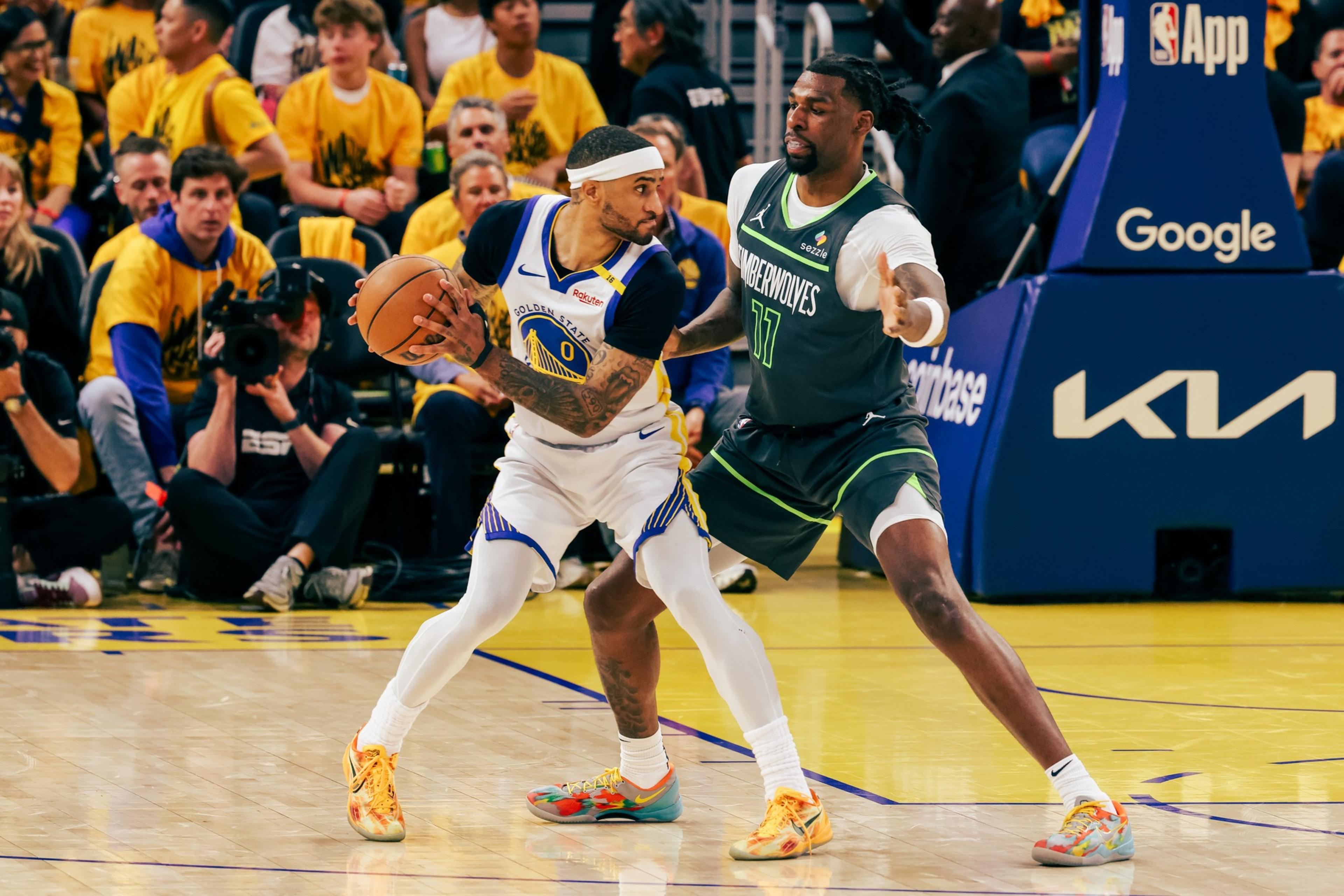Nothing’s been done. Literally. Officially. It’s no secret that the Warriors are the only team in the league that has completed no signings, re-signings, trades, or other roster manipulations whatsoever this offseason.
Many weeks gone by. Nothing happening. Yeah, I think Warriors fans and the other teams in the league are slightly aware of this.
Other than losing stalwart center Kevon Looney to New Orleans in free agency, the only event to take place on the Warriors’ ledger so far is the drafting of two players in the second round, and, at this point, neither Alex Toohey nor Will Richard seem guaranteed to earn full roster spots by opening night.
So why do things seem quite calm around Warriors headquarters these days? Why isn’t there palpable anxiety in the front office over the lingering Jonathan Kuminga situation, which is gumming up all other possible Warriors activity? Why isn’t there evident frustration about so little action this deep into the offseason?
Here’s why: Though officially it seems like the Warriors’ offseason hasn’t even really begun, unofficially they’re pretty close to finishing up their roster — obviously with Kuminga as the big wild-card caveat.
The Warriors’ front office can’t know how this will all work until they know if Kuminga is in or out — plus the salary number if he’s in or the players coming back if he’s out in a sign-and-trade. That’s all absolutely TBD.

The Warriors and Kuminga have known for months that, given his restricted-free-agent status, his full-force desire to become a featured part of a team, and his mercurial role in Steve Kerr’s rotation plans over the previous four seasons, this would be complicated. Guess what: It’s been so complicated that even now, almost a month into free agency, there are no strong signs of a resolution. Which means that the Warriors have to hold off on potential signings of Al Horford and maybe De’Anthony Melton — because the scale and slots they can offer the two would change depending on what happens with Kuminga.
But in the shadow offseason, the Warriors have set up some things. They definitely have zeroed in on Horford, probably for most or all of the taxpayer midlevel exception of $5.7 million. They would love to add Melton, probably at a veteran’s minimum. And though nobody inside or outside the Warriors’ executive offices is predicting anything definitive about the Kuminga talks, I think there is some reasoned belief that the likeliest scenario is that Kuminga and the Warriors will eventually find a pathway to a two- or three-year deal to come back — and be set up for a trade either in the middle of next season or next offseason.
If you plot it out like that, the Warriors’ asterisk (pending Kuminga) moves will lead to this 12-man roster:
Centers: *Horford, Quinten Post, Trayce Jackson-Davis.
Forwards: Draymond Green, Jimmy Butler, *Kuminga, Moses Moody, Gui Santos.
Guards: Stephen Curry, Brandin Podziemski, Buddy Hield, *Melton.
Meanwhile, Toohey and Richard are likely slotted as two-way players to start the season.
So that leaves the Warriors with 12 rostered players. The running number is actually probably 13 right now, because I think one of the rookies — Richard more likely than Toohey — could be ear-marked for a roster spot at some point during the season, when the Warriors will need to add a 14th player, per CBA rules.
In this scenario, that would mean one open spot. That’s it.
And who could the Warriors be looking at? I’ve heard rumbles about the return of Gary Payton II, who remains unsigned, obviously is beloved throughout the organization, and always is a fit to defend the opponent’s most dangerous scorer.

Another possibility: ESPN’s Anthony Slater reported Thursday that Seth Curry — hey, familiar name! — could be an option for this spot. Either way, it’s likely to be very familiar player.
And unless the Kuminga solution turns into something much bigger than expected, I suspect that’s just about how things will look when everybody reports to camp in September.
Is this a roster — 10 of these players are unchanged from the end of last season, and all of the older players are … older — that will match up perfectly against the Thunder, Rockets, and all other Western Conference superpowers? Not likely. The Warriors’ best path to a big leap this offseason was to trade Kuminga for something great, and that hasn’t happened.
But this is also the core group that went 23-8 to close the regular season and into the play-in once Butler joined the team last February; it’s the group that beat the Rockets in Houston in Game 7 and won Game 1 in Minneapolis even though Curry was hurt early in the second quarter of that contest.
Mike Dunleavy and his front office were never going to tear everything up this offseason after they made the huge move for Butler last February. They’ve explored what they can do with Kuminga and they still don’t know for sure where that will go, but they also know that he’s a very talented player who might help them this season. And presuming there’s a deal relatively soon, Kuminga and the Warriors will both have motivation to see him play well — it’ll help the team and help the market for Kuminga in January and February.
No pressing deadline for a Kuminga deal
Just what everybody wants to hear: Even if both sides are eyeing a midseason trade, there’s not necessarily a big rush to finalize a Kuminga deal.
If Kuminga signs and comes back to the Warriors on a multiyear deal at some point this summer, he’d be eligible to be traded three months into the season — which would be January. The trade deadline is Feb. 12, 2026.
Notably, if he’d signed an extension before his rookie deal expired, Kuminga wouldn’t have been eligible to be traded for six months. But because he hit free agency, the term before an allowable trade is shorter.
And if Kuminga signs his one-year, $7.9 million qualifying offer, he’d have to approve any midseason trade. Again, because he’s likely to want a trade and because any acquiring team would presumably be ready to give him a rich new deal ASAP, this isn’t as relevant as it would be for most other situations.

The Giannis factor
There’s another reason why the Warriors don’t want to give Kuminga away for less than his full trade value: Like every other smart team, they’re trying to maintain every asset they’ve got so they’re ready once and if the Giannis Antetokounmpo market heats up.
If you’re looking to build a trade around a young player who could step right into a barren roster and give a transitioning team a burst of energy … well, I think the Warriors might have a candidate to bring up if Milwaukee ever asks. That is, if the Warriors and Kuminga can agree on a solid deal this summer. Then they’ll both look to the future.
That doesn’t mean the Warriors expect Giannis to ask to leave the Bucks or that they expect him to signal that the Bay Area is his preferred destination. Who knows on all that. Giannis might never leave Milwaukee. Or, if he decides he has to, he might have players other than Curry and Draymond he’d like to join.
But the possibility exists that Giannis could want out and could tell the Bucks that they should trade him to the Warriors. And then it would be up to the Warriors to meet Milwaukee’s price, if possible.
The Warriors aren’t the only team thinking about and positioning for this, of course. They certainly wouldn’t be the team with the most assets to offer if and when Milwaukee begins to contemplate a deal. But the Warriors want to be ready for this. And bringing Kuminga back for, say, three years at $22-25 million a year, would be a fairly interesting step in this very presumptive process.
